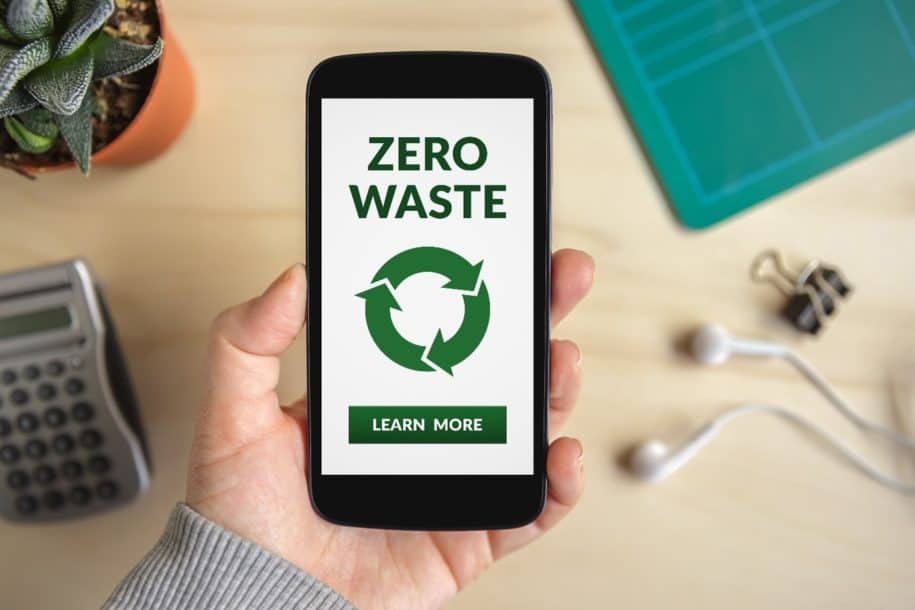Aiming for zero waste may seem daunting to businesses, regardless of size. The required level of know-how could necessitate hiring outside consultants. Concerning profit optimization, the time and money required to build systems that yield no residual by-products may appear counterintuitive. Considering all these factors, business resources spent on achieving zero waste are still investments that bring long-term gain.
Reduction of Raw Material and Energy Costs
Zero waste does entail at least one by-product: more efficient resource use.
Whether you are in the business of providing consumer products or services, optimizing your supply chain can lead to reduced costs for raw materials and energy. In this scenario, you have helped the environment and your bottom line. Optimizing production could mean hiring consultants, implementing management software, or modifying existing infrastructure. While all these solutions cost money, the long-term reduction in operating costs typically offsets the initial investment. If the desire is there, but not the additional finances, a business can start with a small step towards zero waste by transitioning to paperless administration. The average US worker annually uses roughly 10,000 sheets of paper, 70% of which end up in the trash. Completely digitizing administrative transactions and record-keeping means saving finances traditionally used on paper, toner, ink cartridges, and energy consumption by negating printer and copier use.
Conversion of Trash to Products
One department’s trash is another one’s treasure.
To convert waste on a level that makes a difference to the environment and a business’s bottom line, two critical assets must first be identified: recoverable byproducts or waste and adequate processing infrastructure and technical know-how. Processes for production are often not 100% material-efficient, meaning that some of the raw materials used in production are not part of the final output. Once this waste is identified, businesses must ensure that an inexpensive and sustainable infrastructure can be used for it to be repurposed. As an example, General Motors incorporates waste materials into the production of air deflectors in cars. Booms from the Gulf of Mexico oil spill, waste tires, packaging plastic, and other post-consumer plastics, are all utilized to produce a year’s worth of air deflectors in a cost-neutral way. Subaru has been operating a “zero landfill” plant in Lafayette, Indiana since 2004. As a result of this initiative, this location recycles 100% of its waste into car parts or energy and reports yearly savings of millions of dollars.
Keeping on the Good Side of Regulations
Zero waste means staying ahead of the sustainable curve.
As investors and consumers become more environmentally aware and socially active, governments are increasingly compelled to address sustainability issues through regulatory initiatives. Across the United States, regulations are being introduced that target how waste is managed, particularly single-use plastics. While such policies are currently targeted toward individual consumers, governments are steadily emphasizing cutting out waste at the source to alleviate some of the burden from landfills. Austin, Texas has recently created a Zero Waste Strategic Plan, highlighting the importance of “Extended Producer Responsibility” (EPR) to reaching the city’s zero waste goals. Under such a program, once businesses accept the physical and financial responsibility of their packaging and waste products, they are incentivized to create ways to keep them from the city waste system. This trend of state legislatures crafting zero waste resolutions is signaling businesses to be more proactive.
Boosting Company Image
What’s good for Mother Nature is good for her children.
Apart from increasing your company’s bottom line and shielding it from tightening environmental regulations, zero waste programs boost the public perception of a business. This doesn’t come as a surprise, as we are continuously bombarded with new information about companies contributing to environmental degradation. Implementing zero waste programs and marketing them as such will make your business stand out for the younger generation, increasing profits and ensuring the longevity of your business. Building a system that leads to zero waste has become an emerging investment type. With larger enterprises taking the lead, investors, consumers, and regulatory bodies are quickly following suit.
Equipping your business with the right experts and resource management tools to build your zero-waste production chain can yield huge returns that both boost profits and improve the long-term value of your enterprise. Greater investments in sustainability for the earth roughly translate to greater sustainability for your business.
Author Bio
The SafetyStratus Research Advisory Group (RAG) brings together thought leaders from the global environmental, health, and safety community to promote best practices and provide key insights in the profession and the industries they serve. The Research Advisory Group also advocates, where practical, the intersection of and advances with the use of technology, such as the SafetyStratus enterprise EHS software platform. Group membership consists of representatives from across varied disciplines and market sectors as well as select members of the SafetyStratus team.
The primary objectives of the SafetyStratus RAG partnership are to:
- Build a strategic partnership between EHS practitioners and the SafetyStratus team.
- Provide engaging and practical content to the global EHS community.
- Provide discipline and market feedback specific to SafetyStratus products and services.
While the objectives of the RAG are varied, the primary public-facing outcome will be available through engaging and practical content found on the SafetyStratus resource pages. Various articles, papers, and other valuable resources will be produced and shared as part of an ongoing effort to cultivate a robust community. Ultimately, the SafetyStratus RAG will expand to have a broader reach and provide opportunities for more inclusion by all interested EHS professionals in a collaborative community environment.
Sources:
11 Outstanding Ways To Reduce Manufacturing Waste – Conserve Energy Future. Conserve Energy Future. Retrieved 24 March 2022, from https://www.conserve-energy-future.com/manufacturing-waste.php.
Chevrolet Volt Spares Landfills from Gulf Oil Spill Waste. media.gm.com. (2011). Retrieved 24 March 2022, from https://media.gm.com/media/us/en/gm/news.detail.html/content/Pages/news/us/en/2011/May/0523_volt.html.
City of Austin, Texas. (2008). Austin, Texas Zero Waste Strategic Plan. Austin: City of Austin.
How Communities Have Defined Zero Waste | US EPA. US EPA. Retrieved 24 March 2022, from https://www.epa.gov/transforming-waste-tool/how-communities-have-defined-zero-waste.
Markham, D. (2021). Subaru Celebrates 10 Years of Zero Landfill Manufacturing. Treehugger. Retrieved 24 March 2022, from https://www.treehugger.com/subaru-celebrates-years-zero-landfill-manufacturing-4857356.
Reducing office paper use. Minnesota Pollution Control Agency. Retrieved 24 March 2022, from https://www.pca.state.mn.us/quick-links/office-paper.



